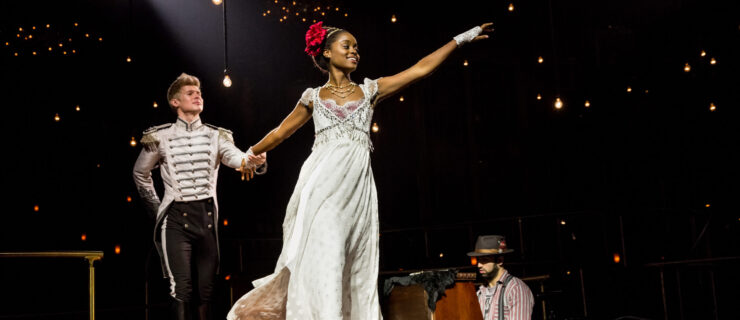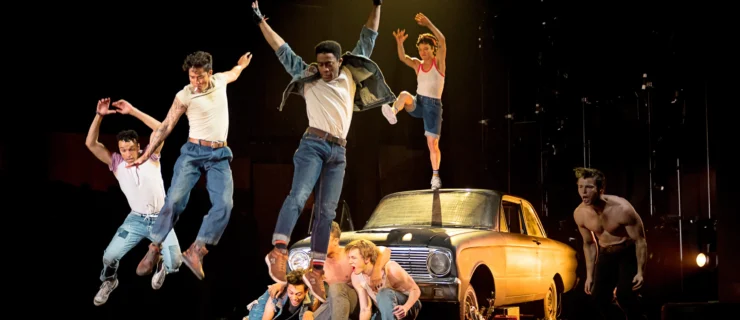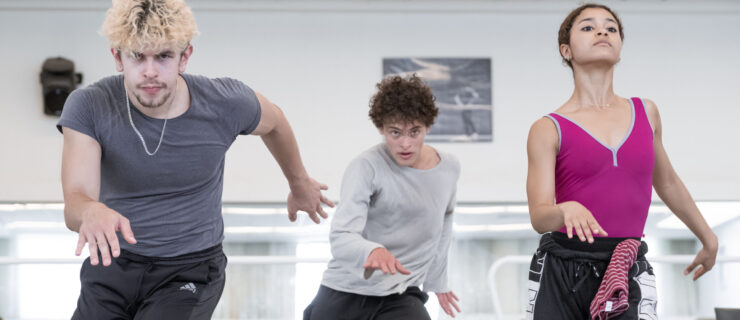Bavarian State Ballet
Bavarian State Ballet
National Theatre. Munich, Germany
April 12–19, 2008
Reviewed by Horst Koegler
With Hans van Manen’s classic Adagio Hammerklavier of 1973 sandwiched in between two creations by Simone Sandroni and Martin Schläpfer, Munich’s 2008 Ballet Festival Week started without the big bang expected from Schläpfer, who is considered the continental answer to Christopher Wheeldon. The Swiss Schläpfer has built up a small, but highly accomplished classical company in Mainz, which has catapulted him into the front rank of choreographers in the Balanchine/van Manen succession. For the first time having the chance to collaborate with a large ensemble, he used 31 dancers of the Bavarian State Ballet for his Viola Concerto II (right), with a score by Sofia Gubaidulina, a composition of numbing narcoticism. He generates a scenic mobile, made up of dancers who start to move by splitting it up into small groups. The choreography looks like it’s being animated by electric shocks, disintegrating into a multitude of miniature haphazard shapes, musically motivated, but lacking any consequence. A certain melancholy runs under its bubbling surface, and the dancers—among them tops of the company like Roberta Fernandes and Lucia Lacarra, Alen Bottaini, Tigran Mikayelyan, Cyril Pierre, and Lukás Slavicky, perform it like a well-oiled machine—but it leaves a feeling of hectic emptiness. Schläpfer might have remembered Balanchine’s Apollo advice “to dare not to use all my ideas.” He obviously has to learn the virtue of economizing.
It’s a problem faced by Sandroni, too, who co-directs the company Déjà Donné, based in Northern Italy. He grew up in the environment of Wim Vandekeybus’ Belgian Ultima Vez group, and its improvisational technique has shaped his personal style. Performed to Bach, Cambio d’abito is very anti Concerto Barocco seriousness, but pokes fun in a collage of pop cuts, with the dancers constantly changing their dresses, which litter the stage or flutter from the flies—without much effect, though, on the character of the loose limbed movements. There are many amusing surprises, but they are generated by the colorful wardrobe rather than by the dancing. Actually it is a ballet for clothes, for which the designer rosalie has obviously plundered the costume department of the theater, while its protagonist desperately tries to hide his nudity behind a towel. It makes a funny opener, but is immediately forgotten when the final curtain comes down.
After which van Manen’s Adagio Hammerklavier materializes like a cleaning detergent: six dancers performing their cultivated conversation, with Beethoven providing the subject, according to the rules of classical structure. Now the dancers are sublime representatives of the art of silent eloquence.
(Photo by Wilfried Hösl, Courtesy Bavarian State Ballet)




